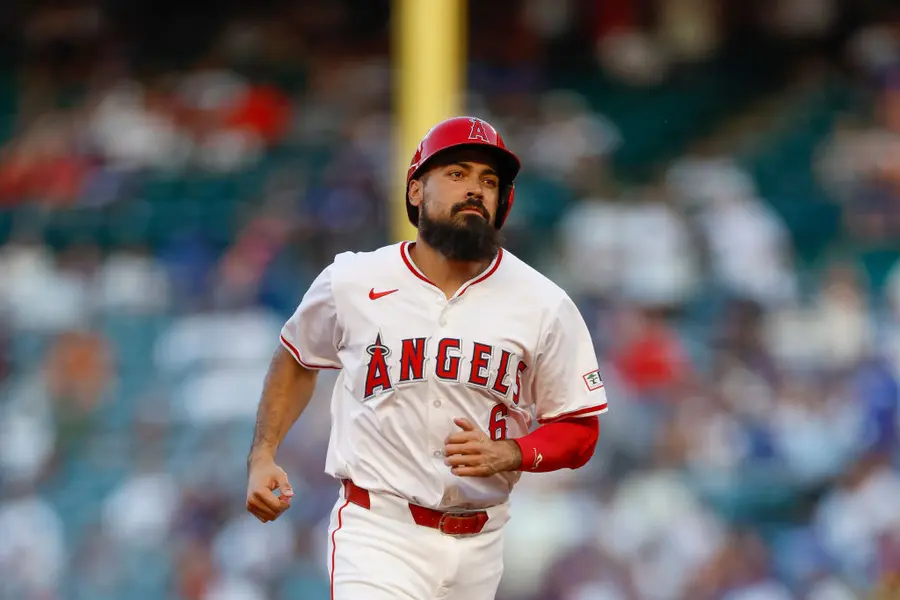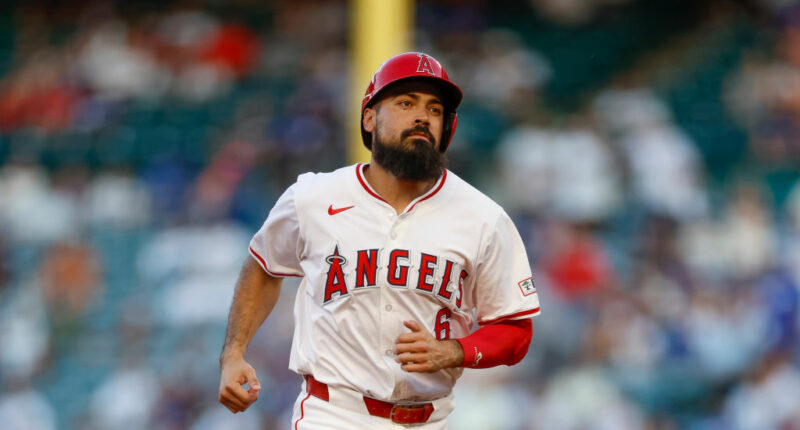Share this @internewscast.com
The Los Angeles Angels have been enduring a challenging period. For six seasons, they failed to reach the playoffs despite having the exceptional talent of Shohei Ohtani. Now, the Angels have seen Ohtani transfer to their city rivals, the Los Angeles Dodgers, where he has contributed to their consecutive World Series victories.
Back in 2019, in their quest to build a winning team around Ohtani, the Angels made a significant investment by signing third baseman Anthony Rendon to a seven-year deal worth $245 million. At the time, this decision seemed wise. Rendon had just clinched a championship with the Washington Nationals and was recognized for his impressive hitting and defensive skills, earning All-Star and All-MLB First Team honors. The hope was for Rendon and Ohtani to form a formidable duo in the lineup, a vision that unfortunately never came to fruition.
So, how did things unfold? Ohtani eventually left for the Dodgers, and as for Rendon, he has been absent for 75% of the Angels’ games. Despite this, he remains on the team, poised to be the highest-paid third baseman in the Major Leagues next season.

Brandon Sloter/Getty Images
The Rendon Deal in Cold, Hard Numbers
The Angels’ decision to sign Rendon to such a lucrative contract included an average annual value of $35 million, fully guaranteed, with a full no-trade clause and no opt-outs or performance bonuses. This deal was meant to solidify the team’s core during the peak years of both Rendon and Ohtani. However, it quickly became one of the most costly financial missteps in baseball history.
Rendon showed promise during the shortened 2020 season, playing in 52 of 60 games and batting effectively. However, that season now appears to be an exception. Starting in 2021, injuries began to accumulate at an alarming rate. Over the 2021-2025 seasons, the Angels participated in 810 games, yet Rendon only managed to appear in 205. He missed 605 games due to various injuries, including groin and hamstring strains, oblique issues, hip impingements, wrist surgery, a fractured tibia, and a complete season absent without a single plate appearance.
Throughout this five-year period, the Angels paid Rendon approximately $152 million. For that hefty sum, they received just over two hundred games, a modest number of home runs, and a cumulative OPS of .666. Essentially, the team paid him over $740,000 per game played. When further analyzed by plate appearance or Wins Above Replacement (WAR), the figures become increasingly disproportionate. Rendon produced negative or negligible WAR in several seasons, offering minimal on-field contribution while occupying a high-value salary position.
A Massive Gap Between Salary and Production
To put Rendon’s salary in context, the highest-paid third basemen in recent seasons include names like Nolan Arenado, Manny Machado, Rafael Devers, and Alex Bregman. Those players have consistently driven their teams’ offenses, logged full seasons, and competed for postseason berths. Rendon’s compensation is higher than all of them, yet his availability and production lag far behind.
A .666 OPS places him well below the league average, and far from the elite tier the Angels expected when they paid for a player coming off a World Series campaign and a seven-plus WAR season. In 2025 alone, 136 players posted a better OPS. Even comparing Rendon to non-superstar regulars exposes a glaring gap between what he is paid and what he produces.
That gap becomes especially stark when considering that the Angels’ contract was not insured in any meaningful way. Most mega-deals in baseball are uninsured because premiums are exorbitant, but some clubs have historically covered portions of long-term commitments to injury-prone players. The Angels did not, meaning every missed inning has been absorbed directly on the team’s books.
How It Went Wrong
The Rendon signing was intended to push the Angels into contention during Ohtani’s prime. Instead, the team never found its footing. Pitching continued to be a chronic weakness, and the Rendon contract severely hampered the Angels’ ability to add depth or flexibility. The club was locked into a nine-figure deal for a player who was rarely able to take the field.
Rendon’s injuries were legitimate and numerous, but the cumulative effect was devastating. The club spent years waiting for a bounce-back season that never arrived. Even when briefly healthy, Rendon struggled to recapture the elite approach and gap power that defined his Nationals tenure. As the injuries mounted, the disconnect between salary and performance grew more dramatic.
The End of the Road
Rendon is on track to earn $38.6 million in the final year of his contract, which would make him the highest-paid third baseman in Major League Baseball. The Angels will finally be free of the deal after the season concludes. Unless Rendon delivers one of the most improbable late-career turnarounds in recent memory, the contract will be remembered as one of the most costly miscalculations in modern MLB history.
(function() {
var _fbq = window._fbq || (window._fbq = []);
if (!_fbq.loaded) {
var fbds = document.createElement(‘script’);
fbds.async = true;
fbds.src=”
var s = document.getElementsByTagName(‘script’)[0];
s.parentNode.insertBefore(fbds, s);
_fbq.loaded = true;
}
_fbq.push([‘addPixelId’, ‘1471602713096627’]);
})();
window._fbq = window._fbq || [];
window._fbq.push([‘track’, ‘PixelInitialized’, {}]);






